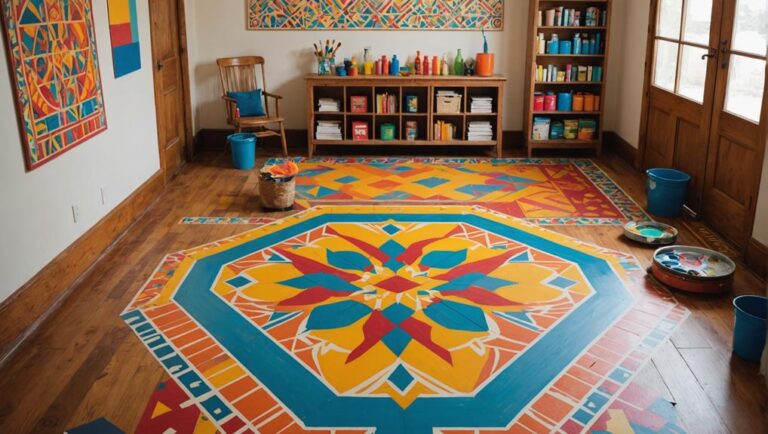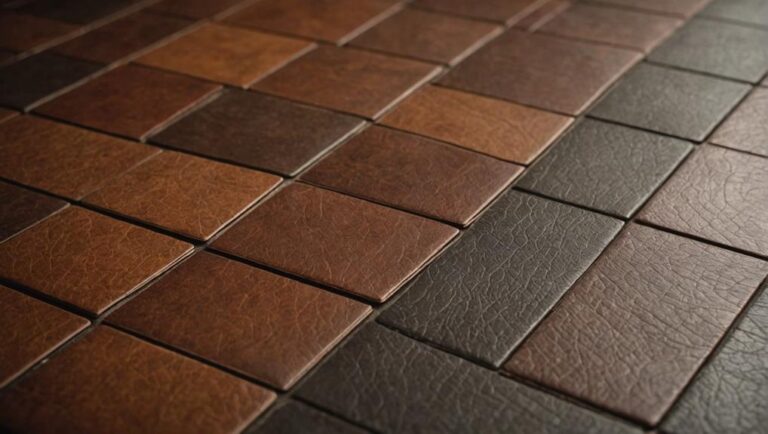First, clear and clean your wood floor thoroughly, removing dust and sanding any rough spots. Next, apply a thin, even first coat of polyurethane using a synthetic brush, always following the wood grain. Once dry, lightly sand the surface with fine sandpaper, then clean off dust before applying a second coat. Repeat this sanding and coating process for a smooth, durable finish. If you want to get a flawless, professional result, there are some important details to take into account next.
Prepare and Clean the Wood Floor

Before applying polyurethane, you’ll need to thoroughly prepare and clean the wood floor to secure proper adhesion and a smooth finish. Start by removing all furniture and sweeping away loose debris. Use a vacuum with a soft brush attachment to pick up fine dust particles. For floor preparation, inspect the surface for scratches or dents; sand these areas with fine-grit sandpaper until smooth. After sanding, clean the floor using a damp mop with a gentle wood floor cleaner to eliminate residue and dust. Avoid soaking the wood, as excess moisture can damage it. Allow the floor to dry completely before proceeding. Following these cleaning methods guarantees the polyurethane bonds effectively, giving you a durable, flawless finish that lets you enjoy your floor freely.
Apply the First Coat of Polyurethane
Start by selecting a high-quality polyurethane suited for your floor type, whether oil-based for durability or water-based for quicker drying and lower odor. Before applying, stir the polyurethane gently to avoid bubbles. Use a high-quality synthetic brush or a foam applicator for smooth application. Begin at one corner, applying thin, even strokes along the wood grain, maintaining a wet edge to prevent lap marks. Avoid over-brushing, which can create bubbles or streaks. Pay close attention to edges and corners, ensuring complete coverage. Allow the first coat to dry fully according to the manufacturer’s specified drying times—this can range from 2 to 24 hours. Proper drying is essential for adhesion and finish durability. Mastering these application techniques will set a strong foundation for a flawless, long-lasting floor finish.
Sand and Apply Additional Coats

Once the first coat of polyurethane has fully dried, you’ll need to sand the surface lightly with fine-grit sandpaper (220-grit is ideal) to remove any imperfections and secure proper adhesion of subsequent coats. Use gentle, even strokes following the wood grain, avoiding aggressive pressure that could damage the finish. This sanding technique creates a smooth, slightly roughened surface perfect for the next layer. After sanding, thoroughly clean all dust with a vacuum and tack cloth to guarantee a flawless application. Apply the second coat evenly, maintaining consistent brush or roller strokes. Repeat this sanding and coating process for at least two to three coats, depending on desired durability and sheen. These finishing tips help you achieve a professional, long-lasting wood floor finish that sets you free to enjoy your space.




